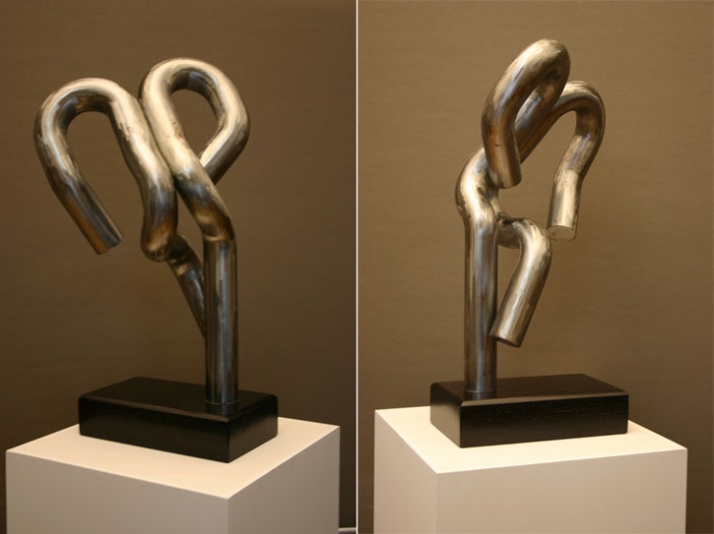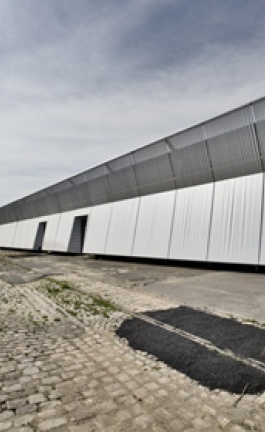sketch by Christos Georgoudakis, Courtesy of Christos Georgoudakis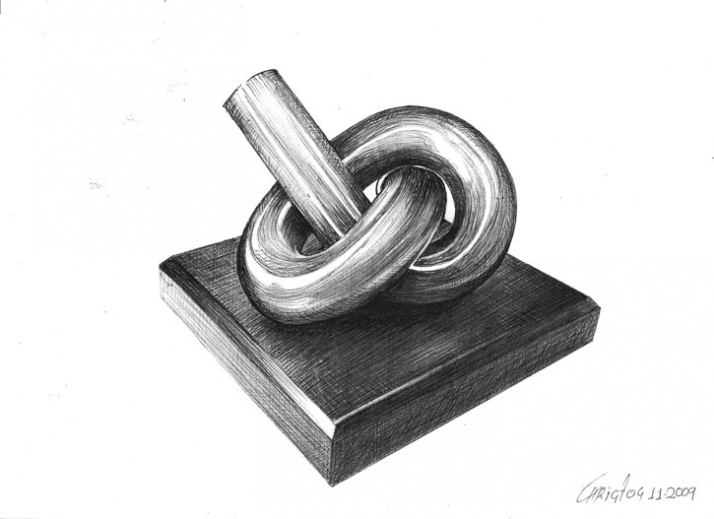
Yatzer and I started out to go to the studio of a former professor of ours who is a sculptor // designer // illustrator and what we discovered a very creative individual. To be honest we didn’t know that we would come across so much work from this multitalented person who has experimented with so many materials, concepts, and projects in the field of art and design throughout his life. For obvious reasons we cannot present all of his work, but only his latest work which was recently exhibited in an art gallery in Athens // GR. A Greek artist who isn’t all that ordinary as he had collected work for almost twenty-five years and kept it in the dark without exhibiting it at all. As if his works were hidden in a dark place as if they felt safe, and he felt the light better when he kept quiet. We hope that we only influenced him and convinced him to continue creating art work which will hopefully be exhibited. Through our conversation I understood that his art work as well as his philosophy in life is based on deduction or otherwise what is known in art as minimalization. “I absolutely agree with the philosophy of deducting and not accumulating. I believe that accumulation destroys the quality of our lives leading to consumerism. I know that we live in a period of accumulation; but in the end the little is the entirety in life.” Yatzer is proud to present Christos Georgoudakis in a personal interview and is pleased to exhibit his much influential works that inspire us through their symbolic representations as he gives life and dynamic form into a material which is difficult to handle and create such inspiring minimalistic sculptures with metal pipes.
portrait of Christos Georgoudakis by Yatzer.com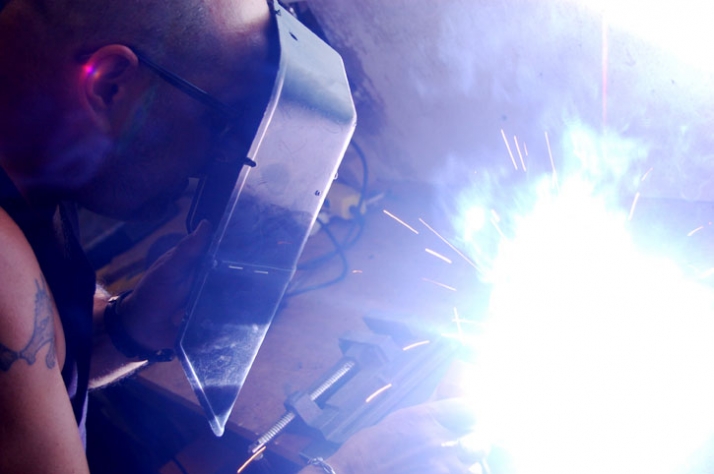
When in your life did you realize that you wanted to be an artist/creator?
It was at a very early age in my life, I always remember myself with a pencil sketching. From a very young age I found interest in creating things with my hands I was really into construction. I spent endless hours sawing wood, cutting, gluing, and drilling into various objects to create my own unique objects. Throughout my school years the highest grade that I have ever achieved with great difference from the rest of the subjects was in art class. (Smile)
Most artists don’t construct their art by themselves, especially when it comes to challenging creations they outsource. How come you literally use so many different means by yourself with so much knowledge and so professionally?
It has to do with what I told you before about creating things on my own from a very young age. I got acquainted with many tools and many means such as welding, blowtorch, angle grinders and metalworking, as well as carpentry tools and machines. This way I can use most materials with great ease apart from the standard art materials and techniques which we were taught at university. It really unties your hands and gives you great satisfaction to be able to use such a broad range of materials and means because you can literally construct any crazy idea which comes to your head, and see if it works or not!
Image Courtesy of Yatzer.com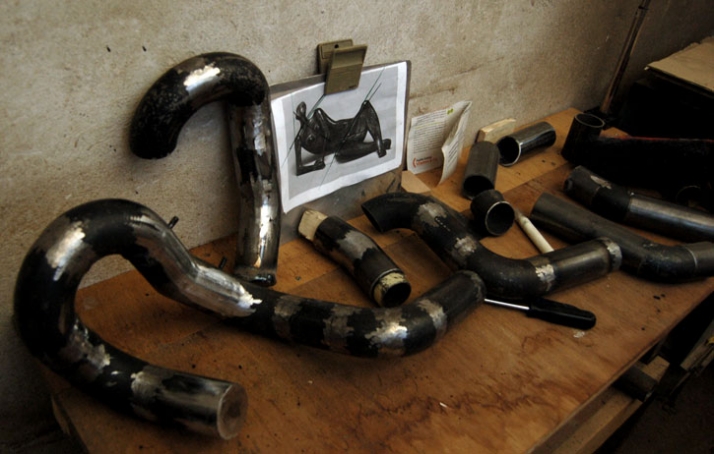
Why was your first exhibition so late in your life especially with so many things to exhibit; what may have led you to hiding all these creations in your studio?
One main reason was that I didn’t have large collections despite the fact that I have created hundreds of art pieces. The reason is that I experiment with a lot of different materials and means and once I realize that I have full control of the material and the means of creation, I want to make something new which seems difficult to me. This really doesn’t help me generate a complete collection. Now, regarding creation, CREATING is an internal need which was satisfied all the way through as I did create art work but didn’t exhibit it. Another reason which may sound silly is that I had and still have a difficulty parting from my art work, with which I finally had to reconcile and I think I did okay after having sold pieces from my first exhibition.
Image Courtesy of Yatzer.com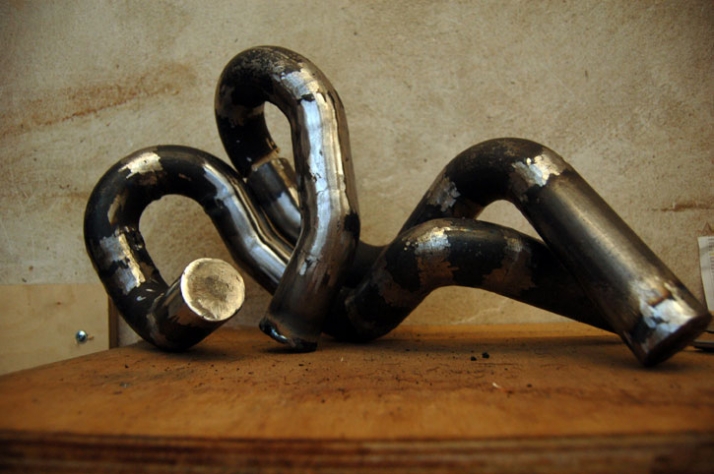
I know that in the past they’ve asked you for interviews; why have you denied them and what led you to give your first interview to us Yatzer? (Although, I have to admit it was a tough one to convince him!)
I don’t generally like giving interviews; I believe that an artist speaks with his work. I decided to give my first interview to Yatzer because I greatly appreciate Costas Voyatzis and yourself as former students of mine as well as the hard work which you put into Yatzer.
Image Courtesy of Yatzer.com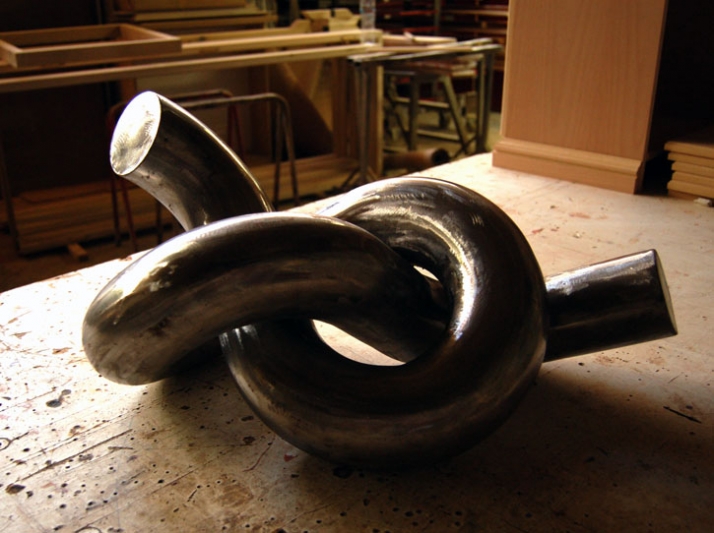
How did you get into making metal sculptures?
First of all, I was thrilled with the fact that it is a very difficult material to handle especially if you want to handle it with competency. That was basically the only reason. When working with metal even when you are at a satisfactory level you realize that it isn’t easily transformed. Every single movement is difficult to achieve; even a small curve. The challenge and the difficulty in handling the material itself led me to creating minimalistic sculptures which are approached and defined through a symbolic approach with elements of graphic design simplicity.
Image Courtesy of Yatzer.com & sketch by Christos Georgoudakis, Courtesy of Christos Georgoudakis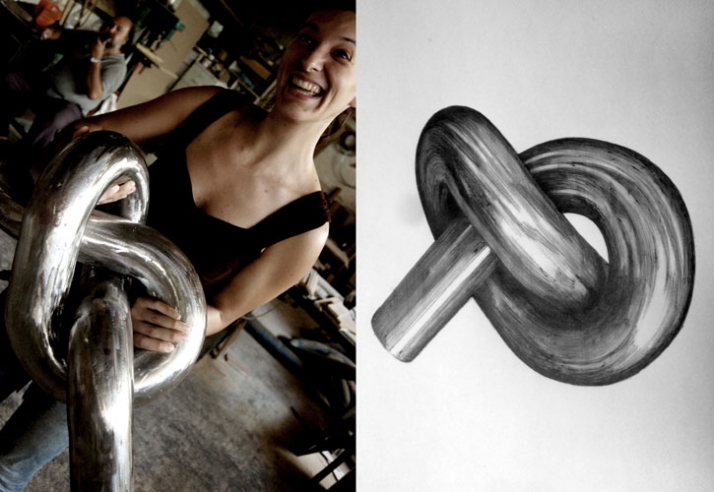
I realize that metal is a very difficult material to deal with as it is very dense and has no plasticity.
The truth is that it is very difficult and challenging. The conciliation with such a tough and dense material such as metal is very hard and needs to be persistent; it needs technical knowledge. There is a long way in the process so that the robust gloss of the metal finishing comes outright and the result is the one desired.
sketch by Christos Georgoudakis, Courtesy of Christos Georgoudakis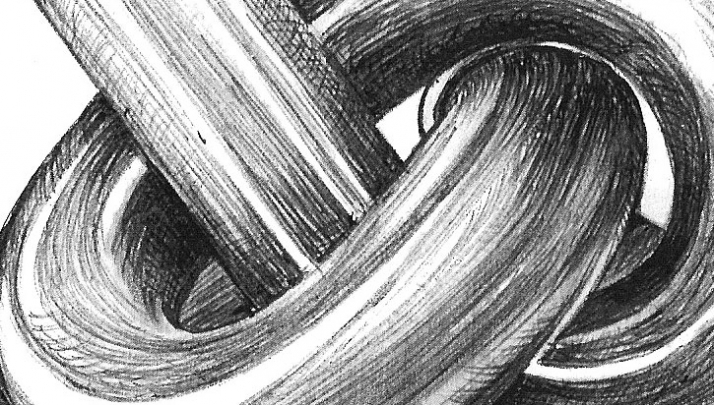
What are your artistic influences?
I am influenced very much by all the knowledge which is found in the past and from then and on you combine the past with your personal touch and creativity. The artist is called on to create the future by reading the past. My influences and inspirers in this series of metal sculptures for instance ranges from graphic symbols, to Cycladic art and to the modern sculptures of Brancusi, Botero, Rodin, Giacometti, Moore, Campo, Arsipenko, and Tatlin among others.
Images Courtesy of Christos Georgoudakis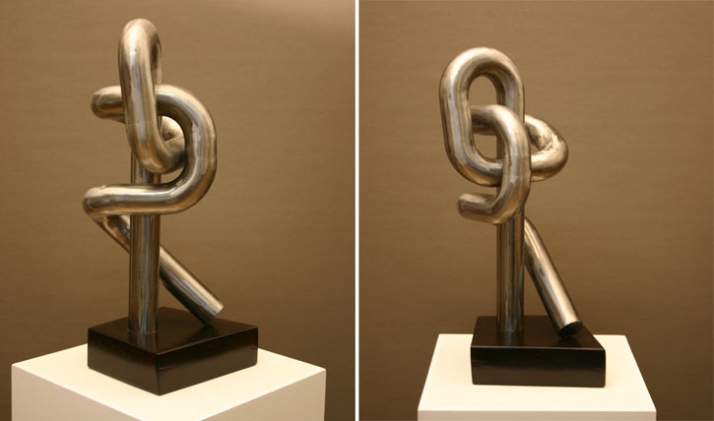
Images Courtesy of Christos Georgoudakis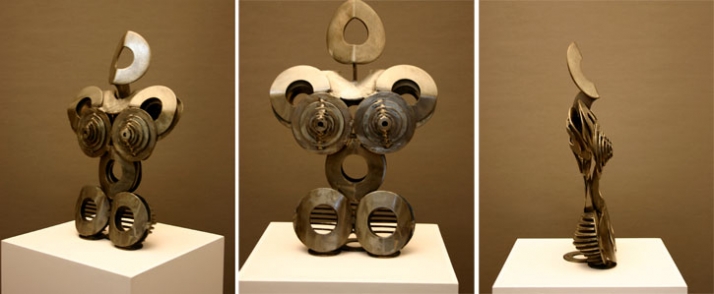
What was the creative process like for you in this series of metal sculptures?
In my creative research I emphasize the perception of movement, an object or a design, in the sense of how this works. Movement is formed by the simple movement of objects. With my sculptures I give soul and movement to objects without copying reality but by transforming it. The usage of color in some of my sculptures dramatically acts with success while pointing out the objectives of a series of movements. This series of sculptures was created by a co-existing volume and a void, a void which creates part of a whole.
What are you working on now and what are your future plans?
I am working on the same series of metal sculptures and will continue to do so because I feel that there is so much more to give into it. For the future I have many ideas which are winding up in my head and haven’t settled to one in specific. At the moment I want to exhaust all the possibilities and the difficulties of this material without overriding any difficulties but by finding solutions to whatever complexity I face.
Image Courtesy of Christos Georgoudakis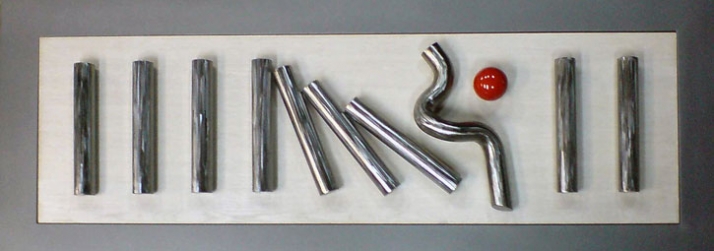
Images Courtesy of Christos Georgoudakis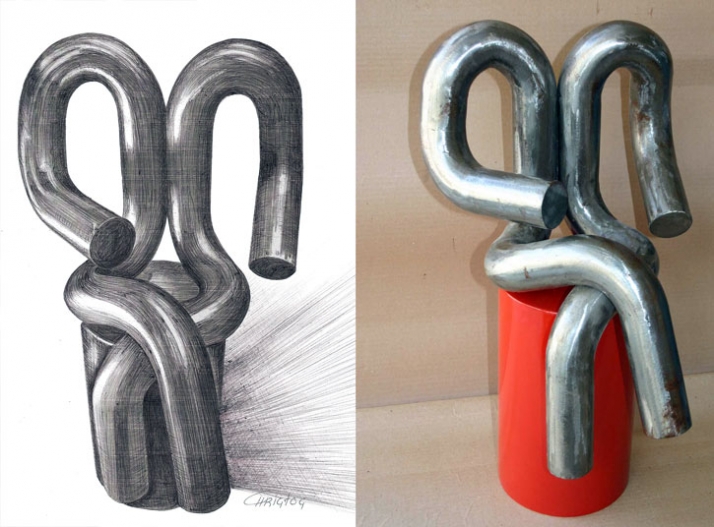
Looking back knowing what you know now, is there anything that you would do differently?
I really don’t know; I think that an artist is always worried with this and is never 100% sure if he/she would have done something differently. I think Robert Frost has covered me with his poem The Road Not Taken… I’ve generally taken the one less travelled by throughout my life, and I guess I’d probably do the same if I had to do everything again from the beginning.
Images Courtesy of Christos Georgoudakis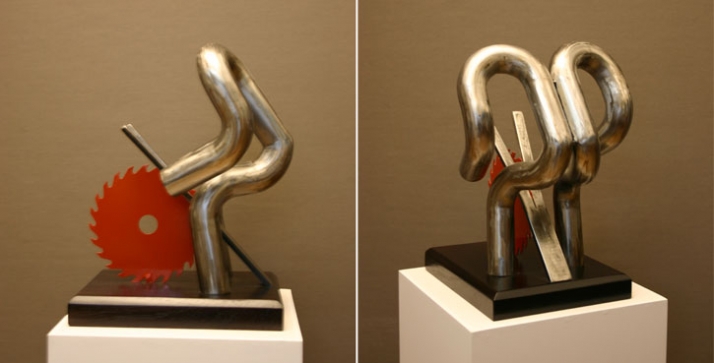
Images Courtesy of Christos Georgoudakis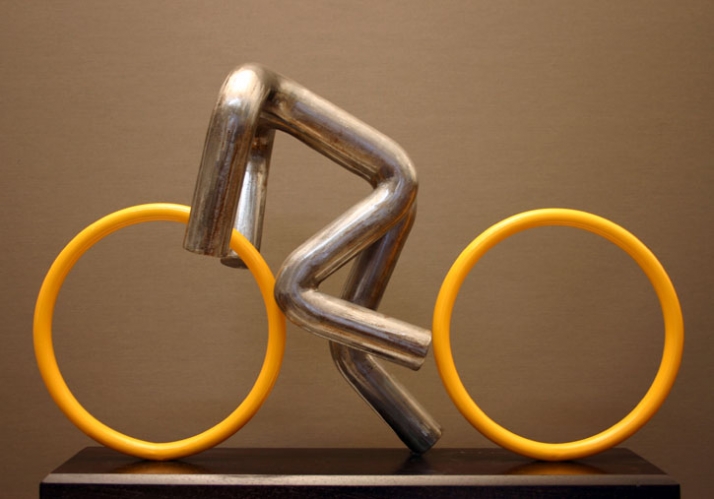
Images Courtesy of Christos Georgoudakis